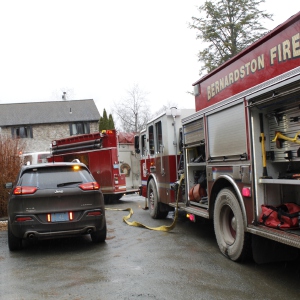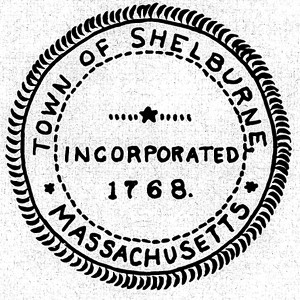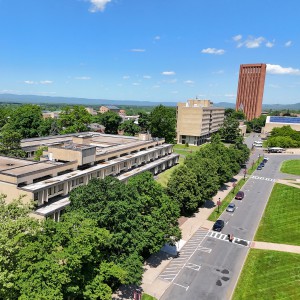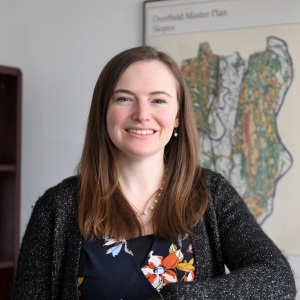Backed by award, Northfield entomologist looks to future research

Northfield entomologist Charley Eiseman, pictured exploring Aton Forest in Norfolk, Connecticut. CONTRIBUTED PHOTO/JULIA BLYTH
|
Published: 12-02-2024 1:20 PM
Modified: 12-02-2024 1:48 PM |
NORTHFIELD — Growing up on a dead-end road in Pelham surrounded by nature, Charley Eiseman couldn’t help but take interest in the natural world.
It was this early love for the environment that ultimately led Eiseman down the career path of entomology, the study of insects. Today, the 46-year-old Northfield resident is responsible for the discovery and naming of 76 new species of leaf miners, a term used to refer to any of the various small insects that, in the larval stages, eat and burrow through plant leaves, leaving intricate and unique patterns behind in the process.
Studying the characteristics of these different patterns allow for identification of the insects responsible. However, before Eiseman, no one had tried to categorize all this information into one guide, let alone take photographs of each species, which he does alongside his research.
Eiseman’s impressions in his field have led him to receive the H.H. Bloomer Award from The Linnean Society of London, which, according to its website, is the world’s oldest learned society devoted to the science of natural history. This award is given to amateur naturalists for their important contributions to the knowledge of natural history.
A second award recently came from the Maxwell/Hanrahan Foundation — which was founded in 2018 to support scientists, teachers and conservationists in discovering new things about the world — as part of its 2024 Awards in Field Biology. The program awarded five scientists with $100,000 each to support their work. Eiseman plans to use this funding to upgrade his microscopes. Additionally, because Eiseman also does freelance work as a field biologist, conducting plant surveys and preparing reports for land trusts, this money will allow him to spend less time freelancing and more time on his independent research.
Eiseman graduated with a bachelor’s degree in wildlife and fisheries conservation and management from the University of Massachusetts Amherst in 2000 before getting his master’s degree from the University of Vermont’s Field Naturalist Program in 2006. Throughout his career, Eiseman has been the lead author of two books describing his research and discoveries. He also runs a blog and website called BugTracks.
“Since I started studying leaf miners, I’ve traveled all over the U.S. and parts of Canada looking for them with my wife, Julia Blyth,” Eiseman said as he began to tell one of his favorite memories of being out in the field.
The two were on top of a mountain in Wyoming walking by a patch of pipsissewa, a plant that Eiseman sees everywhere in New England. Blyth insisted on stopping.
Article continues after...
Yesterday's Most Read Articles
 Two dogs, three cats killed in Orange fire
Two dogs, three cats killed in Orange fire
 Leyden house fire reignites on Monday
Leyden house fire reignites on Monday
 PHOTOS: Hundreds participate in ‘Hands Off!’ standouts across Franklin County
PHOTOS: Hundreds participate in ‘Hands Off!’ standouts across Franklin County
 Plans to move Northfield EMS to Bernardston property fall through
Plans to move Northfield EMS to Bernardston property fall through
 Shelburne Selectboard determines police detective will retain job
Shelburne Selectboard determines police detective will retain job
 Bulletin Board: Greenfield's Savannah Thomas wins Knights of Columbus Hoop Shoot state title
Bulletin Board: Greenfield's Savannah Thomas wins Knights of Columbus Hoop Shoot state title
“I was just going to pass by it. But Julia knelt down to have a closer look and she immediately found some leaf mines on it,” he recalled. “It was a nice reminder that there is always more to discover, and that we can be blind to what is right in front of us if we make assumptions based on what is already known. The leaf miner turned out not to be a new species, but one that was previously only known from farther west and on a different host plant.”
Eiseman’s first book, “Tracks & Sign of Insects and Other Invertebrates: A Guide to North American Species,” which he co-authored with his friend Noah Charney in 2010, was the result of another one of Eiseman’s travels across the country during which the two captured photos of unique phenomena such as Texas leafcutter ants and sierra wormlions. However, most of his discoveries came right here in New England.
“Our area is special because we have lots of protected open space, with ridges, rivers and wetlands, forests and meadows, rocky and sandy areas, and places with nutrient-poor and nutrient-rich rocks and soils — all mixed together in a small area,” Eiseman said. “You don’t have to go far to see a lot of plant diversity, which results in a lot of insect diversity.”
Eiseman started working on his second book, “Leafminers of North America,” in 2011 after receiving a grant from the Nantucket Biodiversity Initiative to conduct a survey of leaf miners in Nantucket. It was then that he realized he could write a whole book on his findings, which led to him self-publishing his work as a serial e-book in 18 monthly installments. In 2019, he published his second edition, with a third not far behind. Since then, Eiseman has amassed a large number of subscribers, with his latest edition being more than 2,000 pages long.
Looking toward his future research goals after receiving the award from the Maxwell/Hanrahan Foundation, Eiseman mentioned he’s going to continue collaborating with other insect specialists to contribute more papers and new species to the world of entomology. One of his individual projects involves moth taxonomy, raising larvae to adulthood before sending them to specialists around the world for identification. Currently, Eiseman has hundreds of moth specimens he plans on studying day by day.
Eiseman also plans to carry on the legacy of Don Davis, a moth and butterfly specialist from the Smithsonian who recently died. Eiseman had been asked by Davis before his death if he could help him to complete a monograph of leaf-mining moths that he began to document in the 1960s.
“I am still determined to finish what he started,” Eiseman said.
For budding naturalists, Eiseman mentioned two websites in particular, bugguide.net and inaturalist.org, that he feels are great resources for people to start learning. Eiseman himself has contributed to and used these websites over the years.
To learn more about Eiseman’s work, visit charleyeiseman.com.






 ‘Whole campus’ approach: UMass working to help six students whose visas, status were revoked
‘Whole campus’ approach: UMass working to help six students whose visas, status were revoked New England West Skating Club honors those who died in D.C. plane crash
New England West Skating Club honors those who died in D.C. plane crash Deerfield hires new planning and economic development coordinator
Deerfield hires new planning and economic development coordinator
